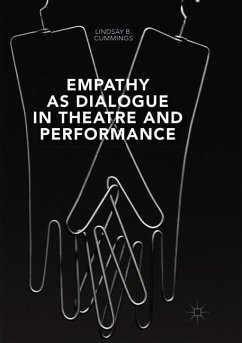Empathy has provoked equal measures of excitement and controversy in recent years. For some, empathy is crucial to understanding others, helping us bridge social and cultural differences. For others, empathy is nothing but a misguided assumption of access to the minds of others. In this book, Cummings argues that empathy comes in many forms, some helpful to understanding others and some detrimental. Tracing empathy's genealogy through aesthetic theory, philosophy, psychology, and performance theory, Cummings illustrates how theatre artists and scholars have often overlooked the dynamic potential of empathy by focusing on its more "monologic" forms, in which spectators either project their point of view onto characters or passively identify with them. This book therefore explores how empathy is most effective when it functions as a dialogue, along with how theatre and performance can utilise the live, emergent exchange between bodies in space to encourage more dynamic, dialogic encounters between performers and audience.
Bitte wählen Sie Ihr Anliegen aus.
Rechnungen
Retourenschein anfordern
Bestellstatus
Storno








